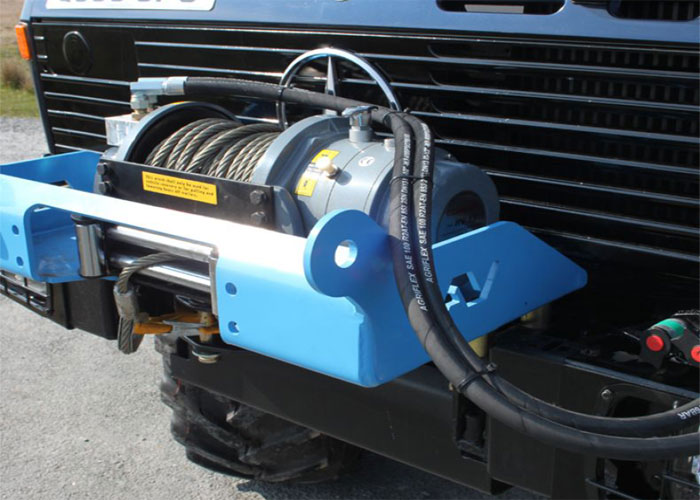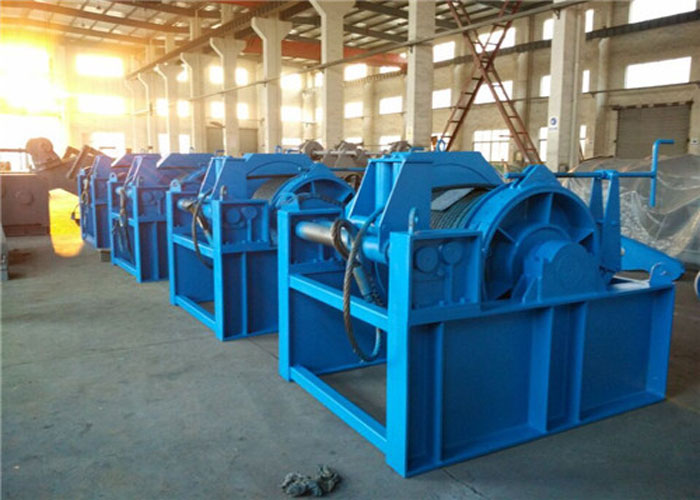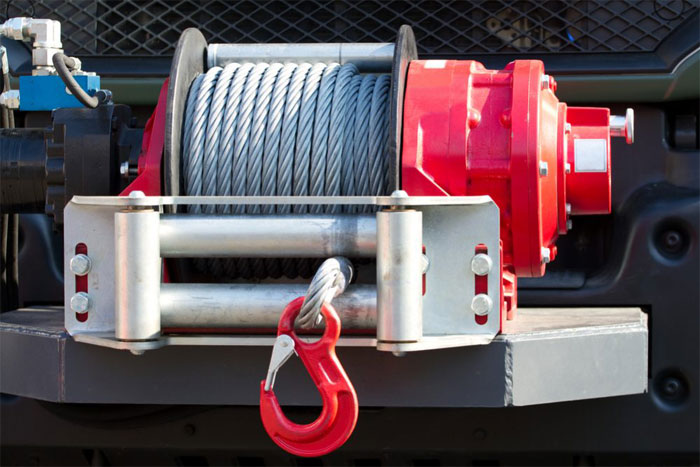How Does a Hydraulic Winch Work?
by Chris Lewis.
A winch is a pulling device used to lift or lower heavy loads and objects. Hydraulic winches operate without a power battery, unlike the normal electric winches.
Even though they will produce the same results, their operations are entirely different. So, how does a hydraulic winch work without a power battery?
A hydraulic winch has some special features that power it to operate for a long time without overheating. They are usually used for heavy-duty marine anchoring and in hauling or lifting heavy loads.
Their applications cut across both onshore and offshore operations. One of the major high points for a hydraulic winch is that it’s completely submersible and has a 100% duty cycle. So, it can operate flawlessly in waters.
This article will discuss how a hydraulic winch works and the features that enhance its operability. Also, you will get to know the components and uses of a hydraulic. So, let's get right into it.
Contents
Components/Parts of a Hydraulic Winch

A hydraulic winch has the following parts or components for effective functionality:
- Drum locking system
- Rope drum assembly
- Pawl pin
- Undercover mesh
- Pawl operating lever
- Removable cover assembly
- Handle stopper
- Top overtravel limit valve
- Wire rope
- Interlock valve support
- Machined connection beam
- Hydraulic pipe
- STD S/S hinge
How Does a Hydraulic Winch Work?

The mechanism of a pressure differential is what runs a hydraulic winch. The device operates on liquid pressure principles.
The liquid is usually the oil that acts as the working medium. As movement flows from a change in seal volume, the pressure within the oil powers the hydraulic winch.
It is the power steering pump that creates the pressure for power transmission within the oil.
The hydraulic winch will build up a pressure difference that will be changed to a pulling force. The technology is similar to that of a hydraulic pumping jack for lifting cars.
The hydraulic system has a compressed valve with a spool at the center, switches, a pump for fluid supply, and a pressure line.
You can include a gearbox to enable the use of custom speeds since a hydraulic winch has no speed options.
To explain the working principle of a hydraulic winch, let’s examine the operation of the different parts.
- Power section – This is the part that converts mechanical energy from the fluid to the hydraulic energy to power the device. The power section uses the power steering pump in its operation.
- Control section – This is the part that enables the control and adjustment of the fluid flow and the pressure force. You can alter the flow direction as you desire. The control section comprises the pressure control valves, the directional control valves, and the flow control valves.
- Execution section – This is the part that converts the pressure energy to mechanical energy. It is the mechanical energy that sets the hydraulic mechanism to start running. This execution section has different motors and cylinders.
- Auxillary section – This is the part that has the oil storage. The section creates connectivity for the other three sections of a hydraulic winch. It performs filtration, measurement, and sealing. It also houses other components of the device. The auxiliary section consists of fuel tanks, seals, filters, accumulators, and piping.
It is also possible to transmit the pressure on a specific liquid volume in all directions when using many hydraulic cylinders.
Each cylinder will push or pull at different speed levels in such a setup, depending on the amount of pressure that can move the targeted load.
Where the cylinders have the same capacity, their movement will follow a sequence. The cylinder supporting the smaller load will move before the one supporting the largest load. But if you want the cylinders to move at the same time, you can use control valves.
Want to keep your winch clean and dust free, also from making any scratch? We recommend buying best winch cover to keep in collection.
Features of a Hydraulic Winch

A hydraulic winch operates through a hydraulic system. The device has the following features or components:
- High Performance – The performance capacity of a hydraulic winch is top-notch. It can run for a very long time without overheating, unlike an electric winch. This makes it a better option for heavy loads and time-constraints operations. Also, people prefer it for upgrading activities and ship launching due to its high performance.
- High Efficiency – A hydraulic winch is more powerful and efficient than a standard winch. Its operations are based on a hydraulic system which enables it to transmit greater efficient force for heavy objects.
- High Strength – The outstanding design for hydraulic winches accounts for their exceptional high strength. They are constructed to portray strength even after a long working period. As a result, you can use them on land and at sea for very demanding pulling or hauling tasks.
- No Battery – A hydraulic winch doesn't need a battery or a generator to function. You can conveniently run it for hours, even in marine duty, without hassles. The mechanism of a hydraulic winch is based on fluid pressure. So, there’s no issue of power failure when working with a hydraulic winch.
- Submersible – One of the outstanding advantages of using a hydraulic winch is its ability to function underwater. There's no fear of sudden damage while in water since it has no electrical components.
Also, a hydraulic winch is designed to be corrosion resistant. Therefore, it can operate effectively when partially or wholly immersed in water.
- Safety – A hydraulic winch is very safe to operate. It doesn’t have any electrical components. That’s why the risks of fire hazards and electric motor stalls are not possible. So, it's safer to handle a hydraulic winch than an electric one.
- Durability – A hydraulic winch is quite durable. With a proper maintenance routine, it can last for a long time. one of the ways to care for the device is through routine mechanical repair. Also, the winch has some components that protect it and enable it to last longer. Such components include a drum lock system, automatic breaks, an emergency stop button, and an over-travel prevention system.
- Installation – Installing a hydraulic winch can be quite complicated. You must understand the mechanical operation very well or hire a professional for any installation.
Uses of a Hydraulic Winch
A hydraulic winch has found its usefulness in several aspects. Theses include:
- Hydraulic winch works best in the marine industry. The device is safe to use in cold climates since it operates without a battery.
- A hydraulic winch is used for both off-shore and on-shore activities. It's used for towing activities, vessel mooring, and hoisting an anchor.
- It is also used to drag or haul heavy objects on docks.
Conclusion
If you’ve followed us through this article, you’ll now understand how a hydraulic winch works. The knowledge will also help you to maintain any hydraulic winch. The operation mechanism of hydraulic winches is quite interesting.
Hydraulic winches are very efficient and effective in their operations. Therefore, they can be used for heavy loads. Also, being submersible, a hydraulic winch can operate safely, even underwater.
 |
 |
 |
 |

About Chris Lewis.
Chris Lewis is a passionate individual with a deep affinity for the world of automobiles. From a tender age, his fascination with cars was nurtured by his father, a seasoned mechanic based in the vibrant city of San Francisco. Growing up under the watchful guidance of his skilled father, Chris developed an early aptitude for all things automotive.
Thoughts on "How Does a Hydraulic Winch Work?"
 |
 |
 |
 |
Get FREE Filters now. Or latest free tools from our best collections.
Disable Ad block to get all the secrets. Once done, hit any button below
 |
 |
 |
 |